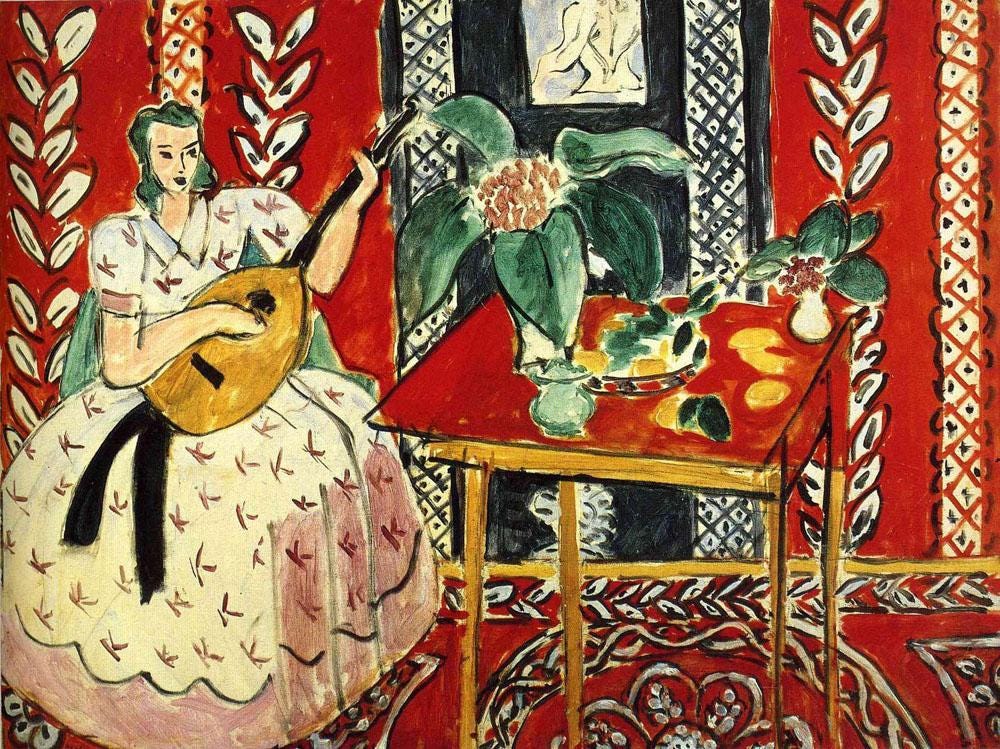AI and Art Why We Crave The Human Element in Creative Expression
I awoke with an overwhelming sense of inspiration, a feeling that persisted as I navigated my morning routine, scrolling through my habitual feeds. An article on Henri Matisse and his relentless pursuit of a unique expression of life through his paintings captured my attention and fueled my contemplation on Artificial Intelligence (AI) and its capacity to replicate artistic expression.
My constant yearning for originality and authenticity, a sentiment shared by all humans, became apparent. I constantly seek that one piece of writing, music, poetry, or strategy that breaks new ground, pushing the boundaries of understanding. The quest for the extraordinary, something that challenges my perception and introduces a novel perspective, has always been a driving force in my appreciation of various forms of art.
However, my encounter with AI-generated art left me perplexed. Instead of being captivated by its brilliance, I found myself saddened. It forced me to confront my own biases and question why I couldn’t appreciate a piece that was a unique expression of life but created by a machine rather than a human artist. It was at this moment of introspection that a revelation dawned upon me — my craving for originality and authenticity stems from the inherent human connection.
I realized that what I seek is not merely the end product but the human behind the artistic expression. I desire to connect with the artist, to understand their perspective and tap into the shared realm of consciousness that unites us all.
This connection adds depth and meaning to my own interpretation and expression of life.
Henri Matisse and Creative Expression
 “The Parakeet and the Mermaid,” 1952–1953 by Henri Matisse. Accompanied by two works of Yves Klein. Collection: Stedelijk Museum Amsterdam. Image: GJ.
“The Parakeet and the Mermaid,” 1952–1953 by Henri Matisse. Accompanied by two works of Yves Klein. Collection: Stedelijk Museum Amsterdam. Image: GJ.
Henri Matisse’s life and work served as a profound illustration of this human connection to art. His journey showcased a relentless pursuit of authentic originality.
Matisse’s evolution from congruence towards authentic originality, sparked by his exploration of the works of seventeenth-century French masters, exemplified a deep commitment to expressing the essence of life.
His deliberate organization of compositions and the strategic play with shapes against the canvas edges reflected a meticulous approach to artistic creation. Matisse’s absorption of lessons from artists like Gauguin and Van Gogh, who infused emotion into color, further emphasized the importance of human emotion in art.
According to Matisse, a painting should parallel nature, not replicate the image perceived through the eye’s retina. His goal was to create compositions that represented nature, not as a mere imitation but as a language expressing the artist’s emotional response — an organic extension.
Matisse articulated,
“Never struggle with nature to reproduce light; we must look for an equivalent, for the means we use are in themselves dead. Otherwise, we would inevitably be led to place the sun behind the canvas.”
Recognizing the impossibility of directly replicating nature, Matisse viewed paintings as a series of understood conventions, possessing their own life, harmony, and spirit.
Highlighting his distinctive approach, Matisse expressed,
“I cannot copy nature in a servile way. I must interpret nature and subordinate it to the spirit of the picture.”
The spirit of the picture, aligned with human emotions, aimed at creating a composition that could communicate with the viewer on an emotional level.
Matisse’s vision of an ideal painting, as an independent ‘organism’ governed by its own laws, resonated with the understanding that art should parallel nature rather than slavishly replicate it. His emphasis on interpreting nature and expressing emotional responses through composition highlighted the unique language that art could embody. Henri Matisse at Work
Henri Matisse at Work
The unity within each composition, harmonizing with his spirit and life’s essence, showcased Matisse’s commitment to infusing personal emotions into his work.
His belief that a well-constructed painting should carry its meanings within, captivating the viewer before they connect with the subject matter, echoed the profound impact of artistic expression on human emotions.
In interpreting Matisse’s approach to art, I found a bridge to my own understanding of original works of art. It reinforced the notion that genuine expression is deeply rooted in the human experience. The Lute (1943) by Henri Matisse
The Lute (1943) by Henri Matisse
This realization, coupled with the inspiration drawn from Matisse’s life, solidified my conviction that while AI tools may assist in various tasks, they can never replace the profound need for authentic human expression in all facets of life, including business, existence, and art.
The human connection to art is a timeless force that transcends technological advancements, and Matisse’s legacy serves as a guiding light in navigating the intricate relationship between creativity, humanity, and the evolving landscape of artificial intelligence.
About Rishad Ahmed
Rishad Ahmed is an international speaker, Leadership coach, Author and Mentor who has worked with Fortune 100 companies globally.
He brings transformative wisdom to your organization to help leaders create a culture which will leave an indelible mark on your employees, your leadership and your bottom line.


































